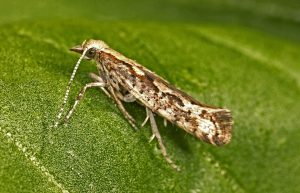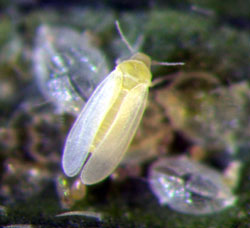David Riley, a professor of entomology at the University of Georgia, says that two pests have been big issues for Southeastern vegetable growers: diamondback moth (DBM) and whitefly.
 DIAMONDBACK MOTH
DIAMONDBACK MOTH
DBM continues to be a struggle for Southeastern vegetable growers, mostly due to insecticide resistance. Riley says that DBM resistance in cabbage and collards is a long-standing problem.
“Diamondback moth is one of the most insecticide-resistant insects in the world,” Riley says.
Riley thought he saw a glimmer of hope, as new insecticides within the diamides class seemed to be performing very well against DBM. However, it did not take long for DBM to become resistant to these insecticides as well. “So, we went from having one of our best products to one of the most problematic,” he says.
Now, Riley has gone back to the traditional resistance management tools: monitoring and detecting resistance to insecticides then rotating the insecticides that continue to work.
Riley says evaluating DBM-infested farms with traditional methods is an ongoing project and extremely hands-on. “We’re having to work with growers and the Extension agents to … identify specific fields that have problems to try to make recommendations,” he explains. He stresses that the recommendations will be done on a farm-by-farm basis.
 WHITEFLY
WHITEFLY
Whiteflies have been an issue in the Southeast for the past couple of years. “Whitefly is going to be a tough nut to crack,” Riley says.
According to Riley, the biggest problem with whiteflies is they have many host plants. So, it is hard to decipher where the whitefly infestations are actually coming from.
Riley says based on population dynamic studies he has done in the past, he knows that whiteflies do travel from winter vegetables to spring vegetables in between seasons. This is an issue because if the whiteflies move from a winter crop to a spring crop, and they are not caught early enough in the spring crop, they can reproduce in tremendous numbers as the cycle continues.
Riley believes that researchers need to work on doing some regional monitoring and management to see where the whiteflies are originating from. Then, they can come up with an action plan for control.
Share this Post









